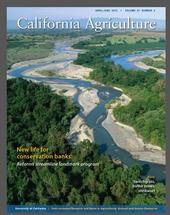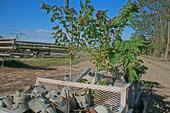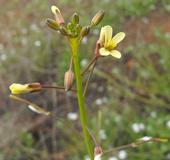- Author: Brad Hanson

The newest issue of the journal "California Agriculture" (April-June 2013) published by the University of California and UC Division of Agriculture and Natural Resources just came out and has two articles written by UC weed researchers
Check out the whole issue here or the specific articles at the links below.
For switchgrass cultivated as biofuel in California, invasiveness limited by several steps
by Joseph M. DiTomaso, Jacob N....
- Author: Guy B Kyser

In ailanthus territory, you have to be careful not to park for too long in one place.
- Author: Brad Hanson
A repost and link today to a recent Weed Science Society of America press release entitled: "WSSA Scientists Stress the Importance of Early Response to Invasive Weeds" Click the link to go to the full article.
I'll also give kudos to the WSSA web team on the brand new redesigned (and really sharp-looking Society webpage here: http://wssa.net/ A great resource for weed science info, jobs, and links to issues...
- Posted by: Gale Perez
- Author: Jeannette E. Warnert

Sahara mustard, a resilient weed native to North Africa and the Mediterranean, is invading desert landscapes in the American Southwest, squeezing out beautiful wildflower displays that attract tourists and maintain the local ecology, reported the San Diego Union Tribune.
UC Cooperative Extension is testing methods of removing Sahara mustard, including hand weeding, hoes and herbicide. But these are only stopgap measures meant to keep the plant at bay in select spots.
“I don’t think we’re ever going to spray the herbicide across the entire Southwest,” said
- Re-posted by: Gale Perez
In the United States, only species listed on state or federal noxious weed lists are regulated. According to our analysis, these regulatory lists poorly represent invasive plants in unmanaged (i.e., nonagricultural) systems. To improve the representation of invasive plants on state regulatory lists, we recommend allocating listing authority to invasive species councils and provide guidance for the science-based reform of noxious weed lists. We also recommend commercial best practices to test for invasiveness prior to intentional introduction of new plant products. Finally, we introduce a negligence liability scheme to discourage the introduction of potential invaders. If adopted, our recommendations could benefit nonagricultural...


